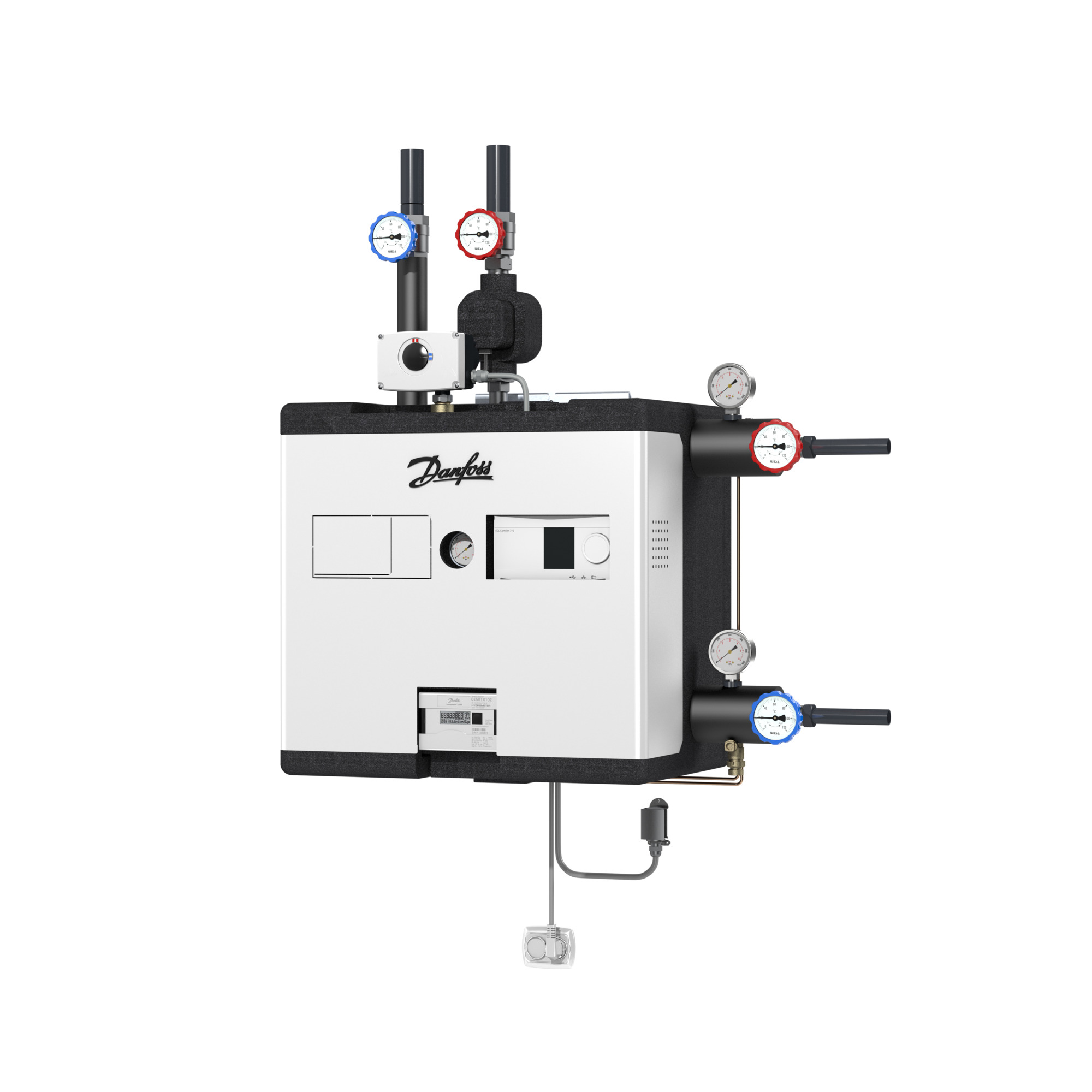Indirect heating
An indirect substation is used when district heating network conditions, such as pressure and temperature, do not allow direct connection. When a substation is connected indirectly, a heat exchanger provides energy-efficient heat transfer. It also ensures that the primary network supply side and the secondary building installation side remain safely separated.

Shows 48 product(s)
004U8250
VX Solo II H2, 2 HE circuits, Type 1, Heating controller name: ECL210
Product Type: VX Solo II H2, 2 HE circuits, Type 1, 16 bar, 110 °C, ECL 310 / AHQM / AMV
004U8251
VX Solo II H2, 2 HE circuits, Type 2, Heating controller name: ECL210
Product Type: VX Solo II H2, 2 HE circuits, Type 2, 16 bar, 110 °C, ECL 310 / AHQM / AMV
004U8281
VX Solo II H, 1 HE circuit, Type 2, Heating controller name: ECL210
Product Type: VX Solo II H, 1 HE circuit, Type 2, 16 bar, 110 °C, ECL 210 / AHQM / AMV
004U8284
VX Solo II H2, 2 HE circuits, Type 1, Heating controller name: ECL210
Product Type: VX Solo II H2, 2 HE circuits, Type 1, 16 bar, 110 °C, ECL 210 / AHQM / AMV
004U8285
VX Solo II H2, 2 HE circuits, Type 2, Heating controller name: ECL210
Product Type: VX Solo II H2, 2 HE circuits, Type 2, 16 bar, 110 °C, ECL 210 / AHQM / AMV
004U8288
VX Solo II H2, 2 HE circuits, Type 1, Heating controller name: ECL 210/A260 & AHQM 15/AMV 13
Product Type: VX Solo II H2, 2 HE circuits, Type 1, 16 bar, 110 °C, VMV 15 / AMV150
004U8289
VX Solo II H2, 2 HE circuits, Type 2, Heating controller name: ECL 210/A260 & AHQM 15/AMV 13
Product Type: VX Solo II H2, 2 HE circuits, Type 2, 16 bar, 110 °C, VMV 15 / AMV150



